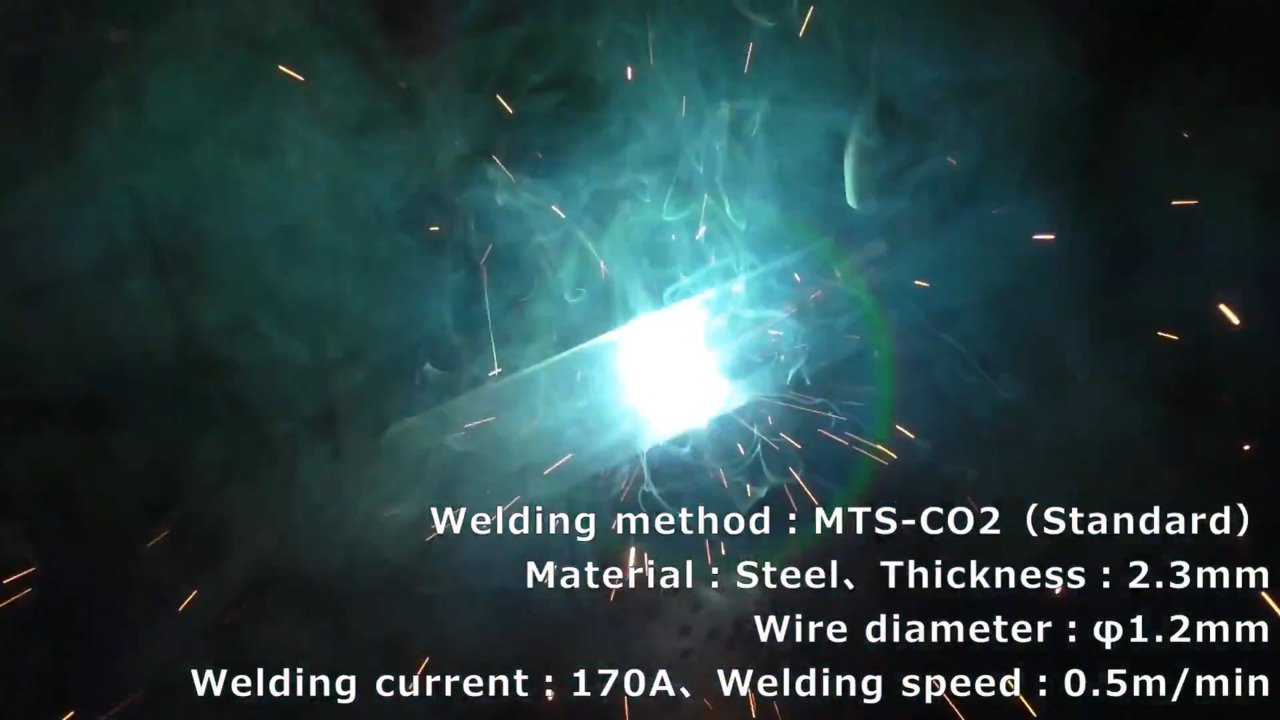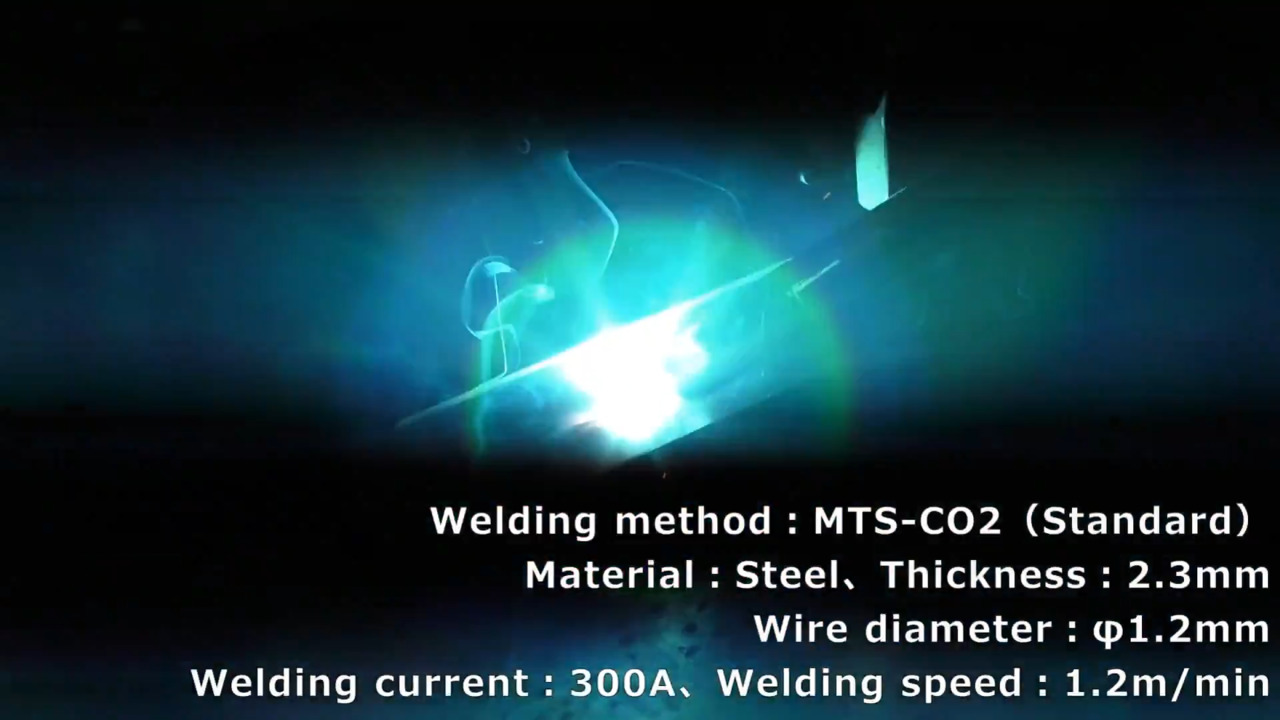Case Studies of Solving Problems-
Man-hours required for spatter removal
Problem: Man-hours required for spatter removal
One of the biggest challenges during welding is the reduction of spatter.
Super Active TAWERS can reduce spatter drastically, and solve this problem.
Problems faced by customers
■Spatter removal is time consuming
■Poor weld appearance due to much spatter generation
Standard CO2 welding
Base metal: Mild steel, Plate thickness: 2.3 mm, Wire diameter: ϕ1.2 mm.
Welding current: 170 A, Welding speed: 50 cm/min
Standard CO2 welding generates more spatter, especially around 200 A.

Video (scattering of spatter with standard CO2welding)
With Super Active TAWERS, man-hours required for spatter removal can be reduced with ultra-low spatter welding even at 300 A. In addition, Super Active TAWERS offers the advantage of ultra high-speed welding.
Standard CO2 welding
Welding method: Super Active welding method (TAWERS)
Base metal: Mild steel, Plate thickness: 2.3 mm, Wire diameter: ϕ1.2 mm.
Welding current: 300 A, Welding speed: 120 cm/min Standard CO2 welding generates more spatter, especially around 200 A.
The spatter particles are smaller in size and are less likely to adhere to the base metal.

Video (scattering of spatter with standard CO2 welding)
What is the Super Active Wire Feed Process?
High-precision feed control where the welding wire is fed continuously with a back and forth motion. Spatter reduction by stable short-arc cycle.
Support
Global Network
Panasonic has established a system to support customers all over the world. Customers expanding production from Japan to overseas factories can also use our equipment with peace of mind.
Website for Panasonic Shoyokai
Website dedicated page for members of Panasonic Shoyokai. You can download the application form to join the membership website P-Web.